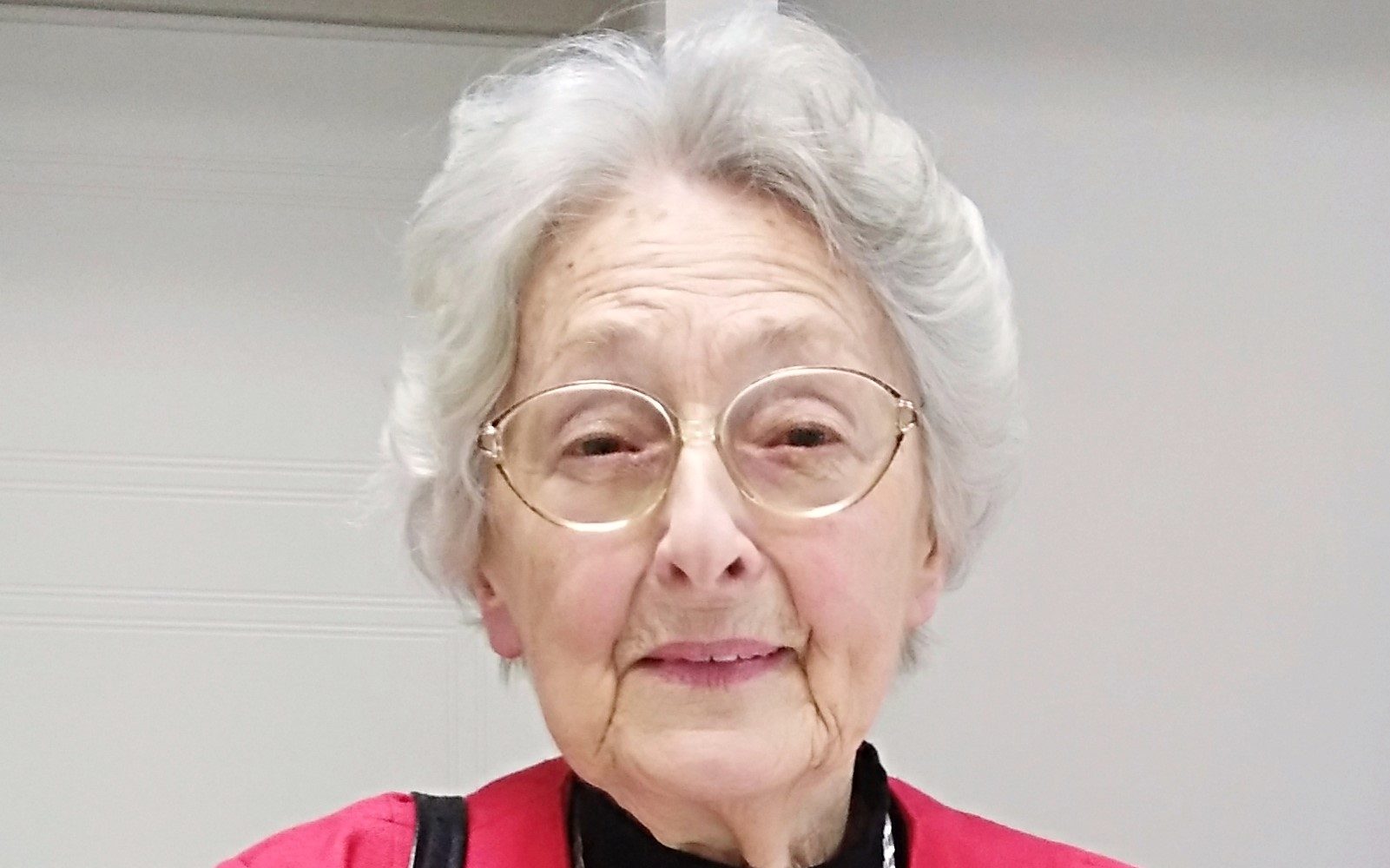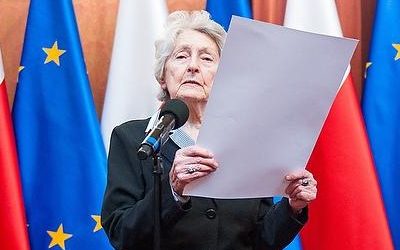On the outbreak of World War II, Janina Stupnicka, who had been an administrator in the Polish armed forces, was evacuated to Romania with her mother and 10-year-old daughter Anna.
Although remaining outside Poland offered a degree of safety, Stupnicka nevertheless decided to return to Warsaw. During the German occupation, her work involved managing and registering buildings, including those in the Warsaw ghetto. Because of the nature of her job, Stupnicka held a permit giving her unrestricted access to the ghetto. She used these trips to smuggle in food to starving Jews. Her daughter Anna often accompanied her, thus becoming an aid giver herself.

In winter 1941, the Warsaw ghetto was bursting at its seams – over 400,000 Jews were crammed inside. Hilary Alter, a member of the Jewish labor party, the Bund, established contact with Stupnicka to arrange for smuggling out his 11-year-old daughter Liliana (later Ridler) from the ghetto. On the set day, Liliana changed into Anna’s Catholic school uniform, pretending to be a Christian girl running an errand in the ghetto with her mother and cousin. Anna recalled the heartbreaking scene when the father and daughter were separated in the ghetto.
Stupnicka, her daughter, and the Jewish girl in hiding had to fend off their neighbors’ curiosity and suspicions. The mother and daughter became skilled at devising believable stories to deceive nosy people and deflect attention. Summers offered opportunities for some respite, as Stupnicka could take the girls to the countryside, which was a regular form of spending vacation for urban dwellers. Thus, their presence there did not arouse as much interest from strangers.

The Warsaw Uprising that broke out in August 1944, spelled new difficulties for the rescuers and the child in hiding. The German authorities expelled them, together with thousands of Poles, from Warsaw to the Pruszków camp, and on to Kraków. The three managed to escape and return to Warsaw in 1945. They stayed together until the end of the war. “And the threat lurked every hour,” Anna recalled, “All of us could die any time.”
Stupnicka and her daughter risked their lives to hide a Jewish girl. Yet this did not deter Stupnicka to help more Jews. Ryszard Grynberg, the son of Stupnicka’s prewar acquaintances, stayed in her apartment until she provided him with forged “Aryan” documents. Stupnicka did the same for Mikołaj Borenstein, a Jewish doctor, for whom she arranged employment. He visited Stupnicka’s apartment almost daily to eat, bathe, and rest.

After the war, the survivors testified that Janina Stupnicka, and her daughter Anna, provided assistance, including food and false documents, without remuneration and for purely humanitarian motives, and were fully aware of the danger their actions involved. The mother and daughter and the Jews they had rescued remained in contact. On September 9, 1983, Yad Vashem recognized Janina Stupnicka and Anna Bando née Stupnicka as Righteous Among the Nations.
Anna Bando became a neurologist. She served as a board member, and later president, of the Polish Society of the Righteous Among the Nations.
Read more at: https://jfr.org/rescuer-stories/stupnicka-anna/
